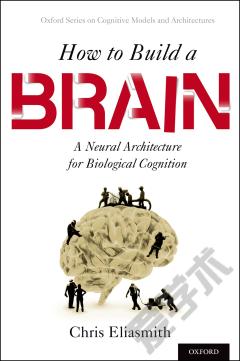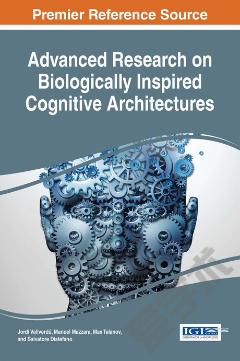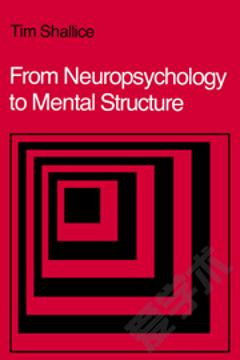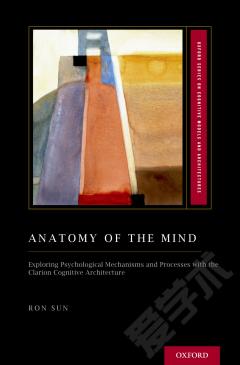How to Build a Brain —— A Neural Architecture for Biological Cognition
----- 大脑构建:论生物认知神经结构
Contents 1 The science of cognition 1.1 The last 50 years 1.2 How we got here 1.3 Where we are 1.4 Questions and answers 1.5 Nengo: An introduction Part I: How to build a brain 2 An introduction to brain building 2.1 Brain parts 2.2 A framework for building a brain 2.2.1 Representation 2.2.2 Transformation 2.2.3 Dynamics 2.2.4 The three principles 2.3 Levels 2.4 Nengo: Neural representation 3 Biological cognition - Semantics 3.1 The semantic pointer hypothesis 3.2 What is a semantic pointer? 3.3 Semantics: An overview 3.4 Shallow semantics 3.5 Deep semantics for perception 3.6 Deep semantics for action 3.7 The semantics of perception and action 3.8 Nengo: Neural computations 4 Biological cognition - Syntax 4.1 Structured representations 4.2 Binding without neurons 4.3 Binding with neurons. 4.4 Manipulating structured representations 4.5 Learning structural manipulations 4.6 Clean-up memory and scaling 4.7 Example: Fluid intelligence 4.8 Deep semantics for cognition 4.9 Nengo: Structured representations in neurons 5 Biological cognition - Control 5.1 The flow of information 5.2 The basal ganglia 5.3 Basal ganglia, cortex, and thalamus 5.4 Example: Fixed sequences of actions 5.5 Attention and the routing of information 5.6 Example: Flexible sequences of actions 5.7 Timing and control 5.8 Example: The Tower of Hanoi 5.9 Nengo: Question answering 6 Biological cognition - Memory and learning 6.1 Extending cognition through time 6.2 Working memory 6.3 Example: Serial list memory 6.4 Biological learning 6.5 Example: Learning new actions 6.6 Example: Learning new syntactic manipulations 6.7 Nengo: Learning 7 The Semantic Pointer Architecture (SPA) 7.1 A summary of the SPA 7.2 A SPA unified network 7.3 Tasks 7.3.1 Recognition 7.3.2 Copy drawing 7.3.3 Reinforcement learning 7.3.4 Serial working memory 7.3.5 Counting 7.3.6 Question answering 7.3.7 Rapid variable creation 7.3.8 Fluid reasoning 7.3.9 Discussion 7.4 A unified view: Symbols and probabilities 7.5 Nengo: Advanced modeling methods Part II Is that how you build a brain? 8 Evaluating cognitive theories 341 8.1 Introduction 8.2 Core cognitive criteria (CCC) 8.2.1 Representational structure 8.2.1.1 Systematicity 8.2.1.2 Compositionality 8.2.1.3 Productivity 8.2.1.4 The massive binding problem 8.2.2 Performance concerns 8.2.2.1 Syntactic generalization 8.2.2.2 Robustness 8.2.2.3 Adaptability 8.2.2.4 Memory 8.2.2.5 Scalability 8.2.3 Scientific merit 8.2.3.1 Triangulation (contact with more sources of data) 8.2.3.2 Compactness 8.3 Conclusion 8.4 Nengo Bonus: How to build a brain - a practical guide 9 Theories of cognition 9.1 The state of the art 9.1.1 ACT-R 9.1.2 Synchrony-based approaches 9.1.3 Neural blackboard architecture (NBA) 9.1.4 The integrated connectionist/symbolic architecture (ICS) 9.1.5 Leabra 9.1.6 Dynamic field theory (DFT) 9.2 An evaluation 9.2.1 Representational structure 9.2.2 Performance concerns 9.2.3 Scientific merit 9.2.4 Summary 9.3 The same... 9.4 ...but different 9.5 The SPA versus the SOA 10 Consequences and challenges 10.1 Representation 10.2 Concepts 10.3 Inference 10.4 Dynamics 10.5 Challenges 10.6 Conclusion A Mathematical notation and overview A.1 Vectors A.2 Vector spaces A.3 The dot product A.4 Basis of a vector space A.5 Linear transformations on vectors A.6 Time derivatives for dynamics B Mathematical derivations for the NEF B.1 Representation B.1.1 Encoding B.1.2 Decoding B.2 Transformation B.3 Dynamics C Further details on deep semantic models C.1 The perceptual model C.2 The motor model D Mathematical derivations for the SPA D.1 Binding and unbinding HRRs D.2 Learning high-level transformations D.3 Ordinal serial encoding model D.4 Spike-timing dependent plasticity D.5 Number of neurons for representing structure E SPA model details E.1 Tower of Hanoi Bibliography Index
{{comment.content}}








 京公网安备 11010802027623号
京公网安备 11010802027623号